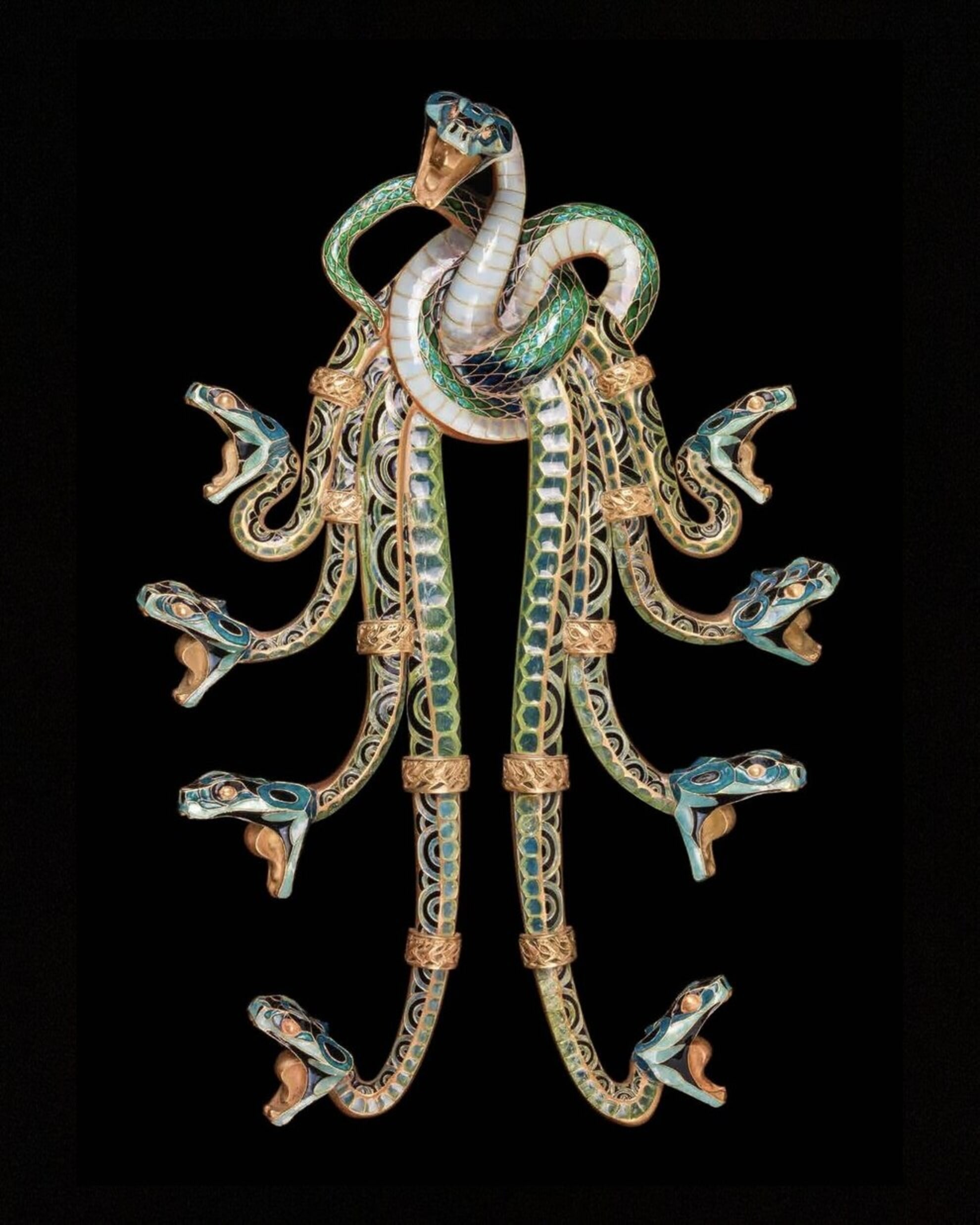
Serpents and Dragonflies
JEWELER OF THE NATURAL WORLD
Luísa SampaioPierre Cartier thought a jeweler’s prestige was bound up with the carats, color, and clarity of the stones he worked with. René Lalique, who was the world’s greatest Art Nouveau jeweler before becoming the world’s greatest Art Deco glassmaker, saw his craft very differently. Chalcedony, moonstone, opal, citrine, enamel, ivory, horn, and crystal were just a few of the materials he favored for his creations; if a pearl was required, then he preferred a scaramazza (or baroque) pearl: irregular and grotesquely imperfect. Insect morphology (exoskeletons, integuments) was one source of inspiration; another was the structure of flowers. One of Lalique’s greatest clients, who was both a collector and a friend, was Calouste Gulbenkian. And Gulbenkian greatly preferred Lalique’s brilliant inventions and artisanal ingenuity to any cornucopia of diamonds, rubies, emeralds, and sapphires. The treasures depicted here are just a few of the marvels the Armenian oil maganate collected, now in Lisbon, at the museum of the Gulbenkian Foundation.







